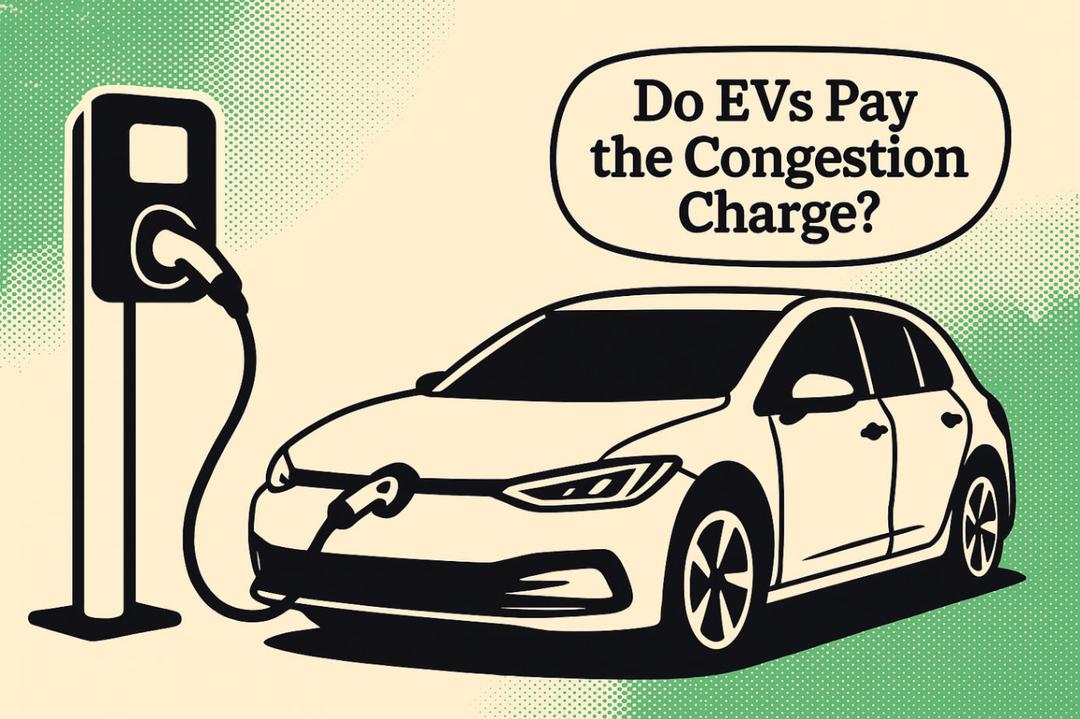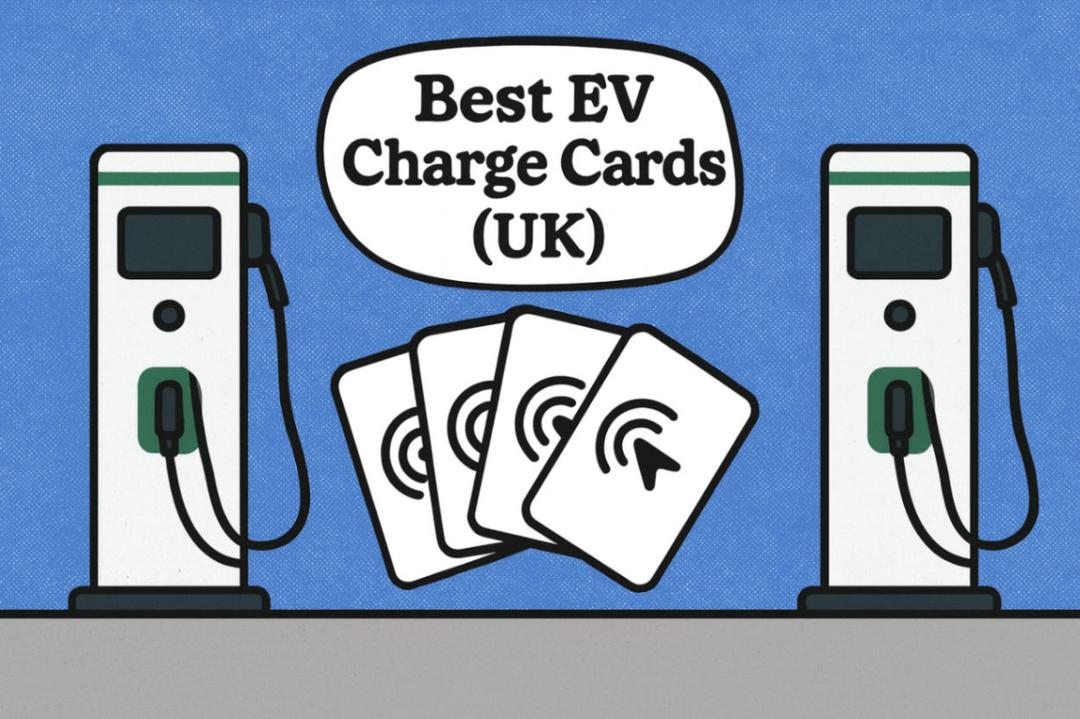Picture yourself pulling into your driveway on a classic British evening - rain hammering down, wind howling, and your electric vehicle (EV) flashing a low battery warning. You glance at your EV charger, glistening in the downpour, and a worry creeps in...
Can I plug in without my car turning into a lightning rod? Or worse, will your shiny new charger pack it in after one soggy night?
At Heatable, we’re here to douse those fears with a bucket of clarity. The answer to “Do EV chargers work in the rain?” is a hearty yes - they’re built to handle Britain’s wettest days and keep you charging safely.
But there’s more to it than a simple yes, so let’s dive into the nitty-gritty of why your charger can brave the drizzle, how to keep it in top nick, and why proper installation is your best mate in stormy weather.
PS We offer EV charger installation nationwide. Simply answer these questions, get your fixed price and arrange your free quote.
Quick Summary:
EV chargers work safely in rain, designed for UK weather.
IP54/IP65 ratings protect against water and dust; IK08 resists impacts.
Sealed units, insulated cables, RCDs, earthing, and smart sensors prevent shocks.
Properly installed chargers are safe in wet conditions - myth busted.
Speed depends on charger power (e.g., 7kW), not rain; cold may slightly affect batteries.
Outdoor chargers (IP54/IP65) suit open areas; indoor (IP44) need cover for heavy rain.
Thunderstorm Tip: Safe in rain, but avoid charging during nearby lightning.
Get a rain-ready EV charger installed by Heatable - get your free quote here.
Designed to Defy British Weather
If there’s one thing we Brits know, it’s rain - whether it’s a light mizzle or a proper soaking that sends you scrambling for your wellies. EV chargers are built with this in mind, engineered to shrug off the elements like a duck gliding across a pond.
Home chargers, like the ones we install at Heatable, come with IP ratings (Ingress Protection) that tell you how well they fend off dust and water.
Most outdoor chargers boast IP54 or IP65 ratings. The first digit (5 or 6) means they’re dust-resistant - think protection from that gritty muck kicked up by passing cars.
The second digit (4 or 5) shows their water resistance: IP54 handles splashes from any angle, while IP65 laughs off low-pressure water jets, like a hose or heavy rain. In short, your charger is ready for anything short of a dunk in the North Sea.
But it’s not just about water. Chargers also have IK ratings for impact resistance, typically IK08 or higher, meaning they can take a knock from a rogue wheelie bin or a kid’s football without batting an eyelid.
The charger’s casing is sealed tighter than a Tupperware lid, and the cables and connectors are designed to keep water out, even when you’re fumbling to plug in during a storm.
Is It Safe to Charge in the Rain?
Electricity and water sound like a recipe for disaster, but modern EV chargers are loaded with safety features to keep you, your EV, and your home as safe as houses.
Let’s break down the tech that makes rainy-day charging a breeze:
Weatherproof Construction: The charger’s electronics are encased in a watertight shell, with gaskets and seals to block moisture. Connectors are water-resistant, so even a wet plug won’t cause a fuss.
Double-Insulated Cables: Charging cables are wrapped in two layers of insulation, ensuring no current escapes, even if they’re sitting in a puddle (though we’d suggest not leaving them there for a bath).
Residual Current Devices (RCDs): These clever devices monitor the electrical flow and cut power in milliseconds if they detect a fault, like a short circuit. It’s like having a lightning-fast electrician on guard.
Earthing Systems: Proper earthing redirects any stray current safely into the ground, reducing the risk of shocks.
Smart Monitoring: Many chargers, like those we offer at Heatable, have built-in sensors that pause charging if they detect issues like overheating, overvoltage, or water ingress.
Let’s bust a big myth while we’re at it: you won’t get electrocuted charging your EV in the rain. The combination of weatherproofing, insulation, and safety devices makes it as safe as plugging in your toaster. The key? A proper installation by a qualified pro - more on that later.
Does Rain Affect Charging Performance?
You might wonder if a soggy day will slow your EV’s charge. Good news: rain has no impact on charging speed.
Your charger’s performance depends on its power output (typically 7kW for home units, or 22kW for faster models), your EV’s battery capacity, and your home’s electrical supply. Rain, sleet, or mist? They’re just background noise.
That said, extreme cold (think sub-zero winters) can slightly reduce battery efficiency, as lithium-ion batteries get a bit sluggish in the chill.
But rain itself? It’s as irrelevant as a cloudy day to your charger’s job. If you’re using a smart charger, you can schedule charging for off-peak hours (usually cheaper!) to dodge the wettest times, saving your pennies and your patience.
Practical Tips for Charging in Wet Weather
Your EV charger is tougher than a pair of steel-toe boots, but a bit of care keeps it humming through Britain’s soggy seasons.
Here’s a detailed rundown of how to charge like a pro when it’s pouring:
Inspect Your Charger Regularly: Before winter’s wet spell, give your charger a once-over. Check the cable for fraying, nicks, or cuts, and inspect the plug for cracks or corrosion. Spot anything dodgy? Call a qualified electrician to sort it.
Shield the Connector: When plugging in, try to keep the rain off the connectorlike holding an umbrella over your chippy tea. It’s not critical (the plug’s water-resistant), but it reduces wear over time.
Store Cables Properly: After charging, coil the cable neatly and hang it on the charger’s hook or a wall mount. Leaving it in a soggy heap invites dirt buildup and potential damage.
Use a Weatherproof Cover: If your charger’s in an exposed spot (say, a driveway with no overhang), a weatherproof cover adds an extra layer of protection. It’s like a raincoat for your tech, keeping off the worst of the wind and rain.
Choose a Smart Location: When installing, place your charger in a sheltered spot, like under an awning or against a wall, to minimise exposure. Avoid low-lying areas prone to puddles or flooding.
Clean and Maintain: Every few months, wipe down the charger with a damp cloth (power off, obviously) to remove dirt or grime. Check for signs of rust or loose fittings, especially after stormy weather.
Go Smart with Scheduling: Smart chargers let you use an app to schedule charging for drier times or cheaper energy tariffs (typically overnight). It’s a win for your wallet and your wellies.
Indoor vs. Outdoor Chargers: What’s the Deal?
If you’ve got a garage or carport, you might be wondering about indoor chargers. These need less weatherproofing - often IP44, which handles light splashes but not heavy rain.
Outdoor chargers, with their beefier IP54/IP65 ratings, are the go-to for exposed driveways or parking spots. At Heatable, we assess your setup to recommend the right charger, ensuring it’s ready for whatever the British weather throws at it.
Got a flood-prone driveway? Raise the charger off the ground during installation to avoid water pooling. It’s a small tweak that makes a big difference in extreme weather.
The Power of Professional Installation
Here’s the golden rule: a safe, rain-ready charger starts with a proper installation. A qualified electrician ensures your charger is wired to UK standards (like BS 7671), fitted with RCDs and earthing, and positioned to dodge the worst of the weather.
Skimp on this, and you’re inviting trouble - think faulty wiring or water creeping where it shouldn’t.
At Heatable, our installers know their onions. We’ll pick a charger that suits your EV and home, install it with all the safety bells and whistles, and make sure it’s placed for maximum durability.
Plus, we handle the paperwork for any OZEV grants, saving you hassle. Cowboy installers? Not on our watch.
Common Concerns and Myth-Busting
New EV owners often have a few niggling worries about charging in the rain. Let’s tackle them head-on:
“Will water get into the charger?” Nope. The sealed casing and water-resistant connectors keep moisture out, even in a downpour.
“Can I charge in a thunderstorm?” Yes, but use common sense. If lightning’s cracking nearby, wait it out - lightning can strike anything outdoors, charger or not.
“Will rain damage my charger over time?” Not if it’s maintained. Regular checks and a sheltered location keep it in top shape for years.
“Is it safe to touch a wet cable?” Absolutely, thanks to double insulation and safety devices. Just don’t go yanking it mid-charge.
Ready to Charge, Come Rain or Shine?
So, there you have it - EV chargers are built to tackle Britain’s wet and wild weather, with weatherproof designs, safety features, and durability to match.
Rain won’t slow your charge, zap your car, or ruin your charger, especially with a bit of care and a proper installation. Whether it’s a drizzle or a deluge, you can keep your EV powered up without a hitch.
Ready to join the electric revolution? Heatable’s here to make it dead simple. Our dedicated EV team will sort you with a top-notch charger, installed to brave any storm, and tailored to your home. Pop over to our EV charger page for a speedy quote, and let’s get you charging, rain or shine!
Got more questions about EVs or charging? Dive into our other blogs or give us a shout. For now, grab your brolly, stay dry, and keep driving electric!
Next Steps For Your EV Charger Journey:
When planning to install an EV charger for your home, there are several important factors to consider. Make sure to refer to the following guides to help you make informed decisions:
To dive deeper into these topics, head over to our advice section or check out our YouTube channel for informative videos.





